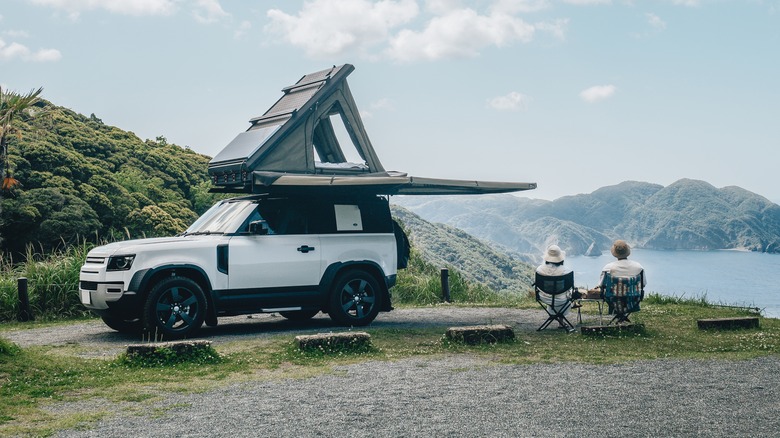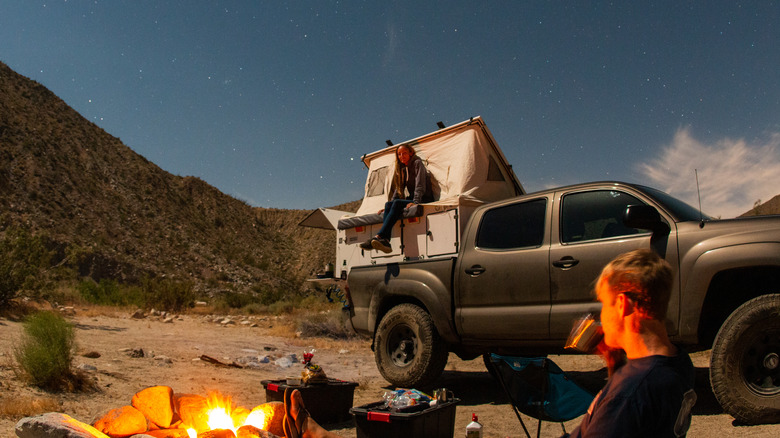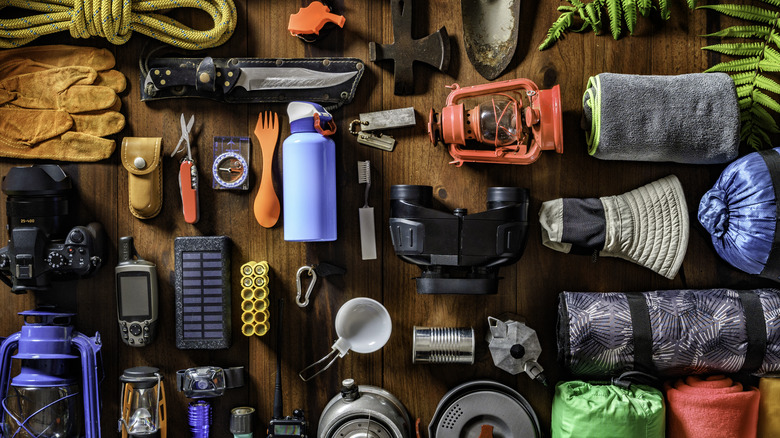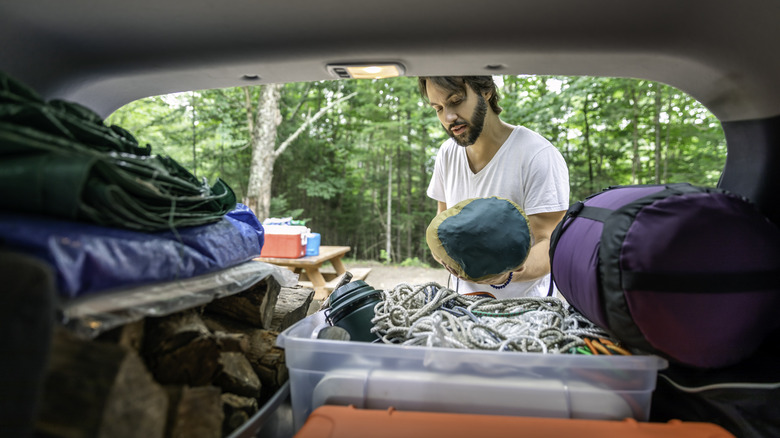Overlanding Explained: Everything You Need To Know About Off-Road Camping
We may receive a commission on purchases made from links.
After a day of off-roading, it can be hard to tear yourself away from nature and head back to civilization. Overlanding is the cure for that feeling of wanderlust. Overlanding is the practice of traveling long distances in an off-roading vehicle with all the supplies and shelter you need.
However, overlanding can take many forms. Some overlanders camp for a couple of days in their local wilderness, while others travel thousands of miles to visit numerous national parks over the course of several months. Some don't even come home for years. Some overlanders embark on motorcycles with their tail boxes stuffed with supplies, while others hit the road in pick-up trucks topped with impressive car-roof tents. There isn't just one correct way to overland, but there are wrong ways.
Indeed, there's more to overlanding than just packing your bags and gunning it. As with all excursions in the great outdoors, preparation is key. Before you set out, consider the limits of your vehicle, what kind of gear you'll need, and how you'll carry all that gear with you. After all, we don't want to just simply survive; we want to thrive.
Choosing the right vehicle for overlanding adventures
Since your vehicle will serve as your shelter, cargo hauler, and transportation through the thick of it, you should consider its limits and abilities. If your current vehicle won't cut it (your small sports car might be fun to drive, but it's probably not fit for overlanding), you may want to consider buying an overlanding vehicle. Four-wheel-drive vehicles are ideal, though vans can also provide extra living space. ATV motorcycles are also well-equipped for the rough roads ahead, as long as you pack lightly.
Pickup trucks with bed caps are basically ready to go since you simply need to pop a mattress in the back and load up your supplies. Alternatively, you can use a convertible camper, a tent-like shelter set up on the roof, or a truck bed. The Roofnest Condor Overland 2, for example, offers ample space and a durable all-weather design. However, it's fairly bulky, even when packed down, and the setup can take a while. Furthermore, it works best when set up on a truck bed.
The chariot you choose is ultimately a question of your off-roading preferences. Indeed, if your vehicle can't handle a long trip on a paved road, it certainly won't make it through 1,000 miles of mud, stone, and gravel. Make sure your vehicle is capable of long excursions.
You don't want to break down in the middle of nowhere. You should give your vehicle a thorough inspection and tune-up before you leave. That means changing the oil, cleaning or replacing the filters, checking the brake, power steering, and transmission fluid, and prepping anything else that demands attention. Also, if your tires are worn out, you'll have to replace them.
The gear you'll need for overlanding success
Here, the basic staples of life apply: water, food, and shelter. As a rule of thumb, you should have one gallon of water per person per day. It's probably more than you can drink in a day, but you'll have a little extra for accidental spillage, hygiene, and cooking. If you plan on traveling for a long time, mark any water refill points along your route.
A simple water filter, like the Sawyer Squeeze Water Filtration system, is essential to bring along. It will allow you to fill up from rivers, streams, and lakes. You'll still have to make sure your water sources aren't toxic, but a filter reduces your dependency on the grid.
For food, it's up to you. Humans can survive for weeks without food, but we're not overlanding just to survive. Perishables, like fresh fruits, meats, dairy, and vegetables, won't last long on the road. We recommend packaged and canned foods, like soup, vegetables, and canned fruits. If you have access to a fire or stove, you can also buy some MREs, which are nutritious and quick to prepare.
For shelter, you have tons of options. Most overlanders use a tent, while some can employ pop-up campers on vehicles like the Nissan Armada Mountain Patrol. But beyond the roof and walls, a quality sleeping bag and sleeping mat are well worth the investment. Consider the climate where you'll be traveling and choose a sleeping bag suited to the environment. Sleeping mats are a comfort item, but you won't regret bringing something comfortable.
After you've secured the basics, you can compile a list of everything. Clothing, med kits, blankets, flashlights, tools, and a spare tire are critical for a smooth time.
Can your vehicle carry all that overlanding gear?
Organizing your cargo is extremely important, so pack smartly. This is why keeping an inventory of your gear is so useful. You don't want to have to tear all your supplies out of the trunk in search of a medical kit you're not even sure you packed. Instead, try to maintain a physical list of everything and update it as needed.
Before you set out, you should also consider the total volume of all your gear to make sure it fits. With tents, food, water, clothes, tools, and emergency supplies, the volume of needed cargo space builds up fast. Again, pickup trucks and SUVs will likely provide ample room for all your creature comforts, but smaller AWD vehicles and motorcycles can also be packed efficiently to accommodate the essentials. If you're a beginner, read up on all the tips and tricks for truck bed camping.
Thus, we recommend compiling all your gear into a tight cubic pile a day or two before you head out to gauge how much storage space your vehicle will need. Once it's all collected together, measure its volume and the volume of your vehicle's storage space. You can do this with a tape measure by multiplying the length, height, and depth. Alternatively, you can pack everything a day or two ahead of time to see if it fits.
If you have multiple storage spaces, simply add their volumes together. You don't have to be too precise, either, since the available storage space of your vehicle should always be greater than the volume of your gear.



